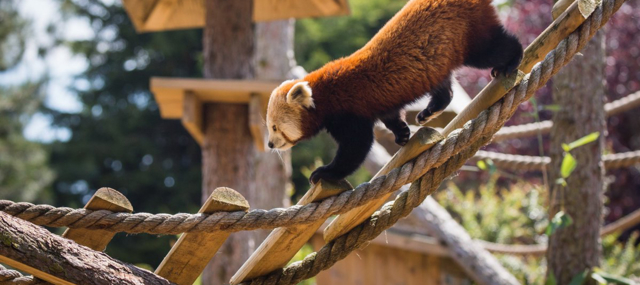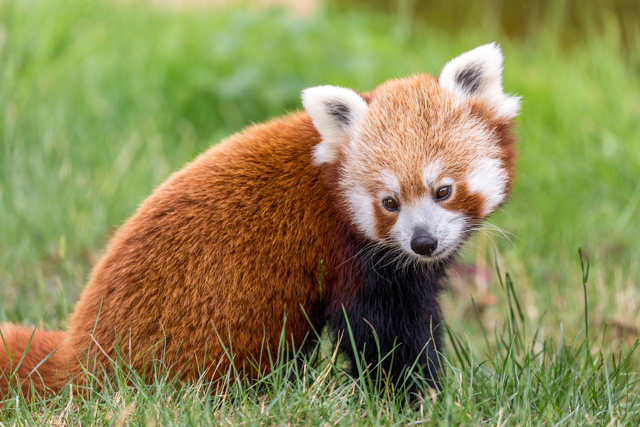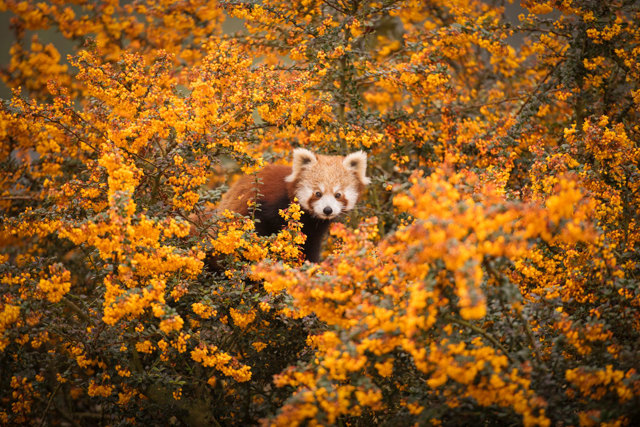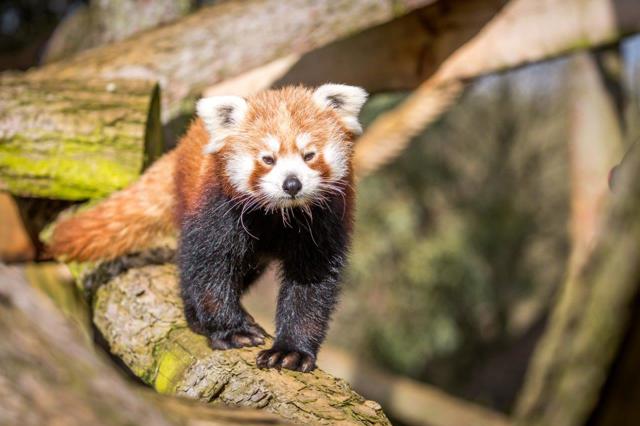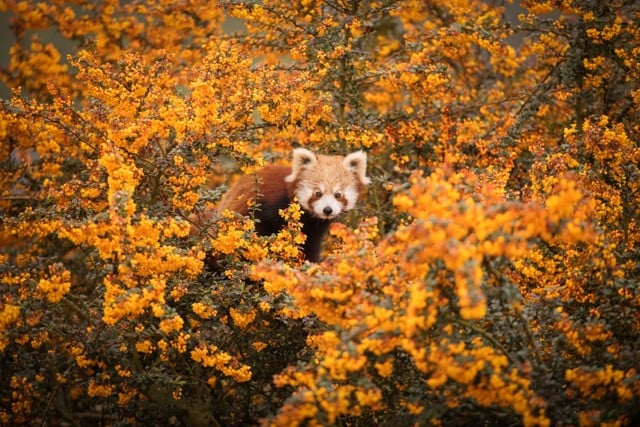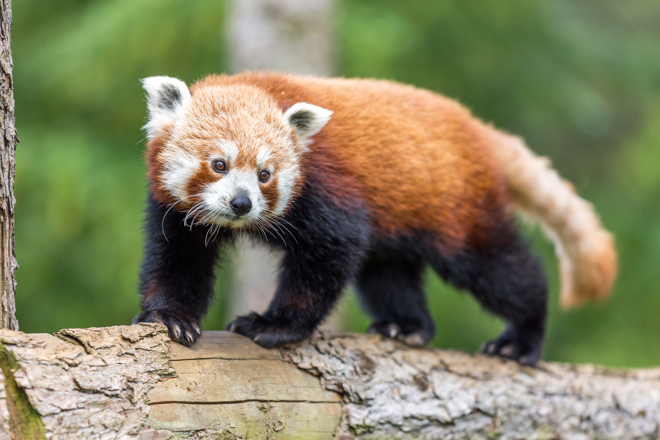
Overview
The word ‘panda’ is derived from the Nepalese word ‘ponyo’ meaning Bamboo or plant eater. Although their favourite food is bamboo, these animals are not strictly herbivores and will also eat insects, eggs and sometimes even birds!
Woburn Safari Park is home to a beautiful female red panda called Mali, that lives in the Foot Safari.
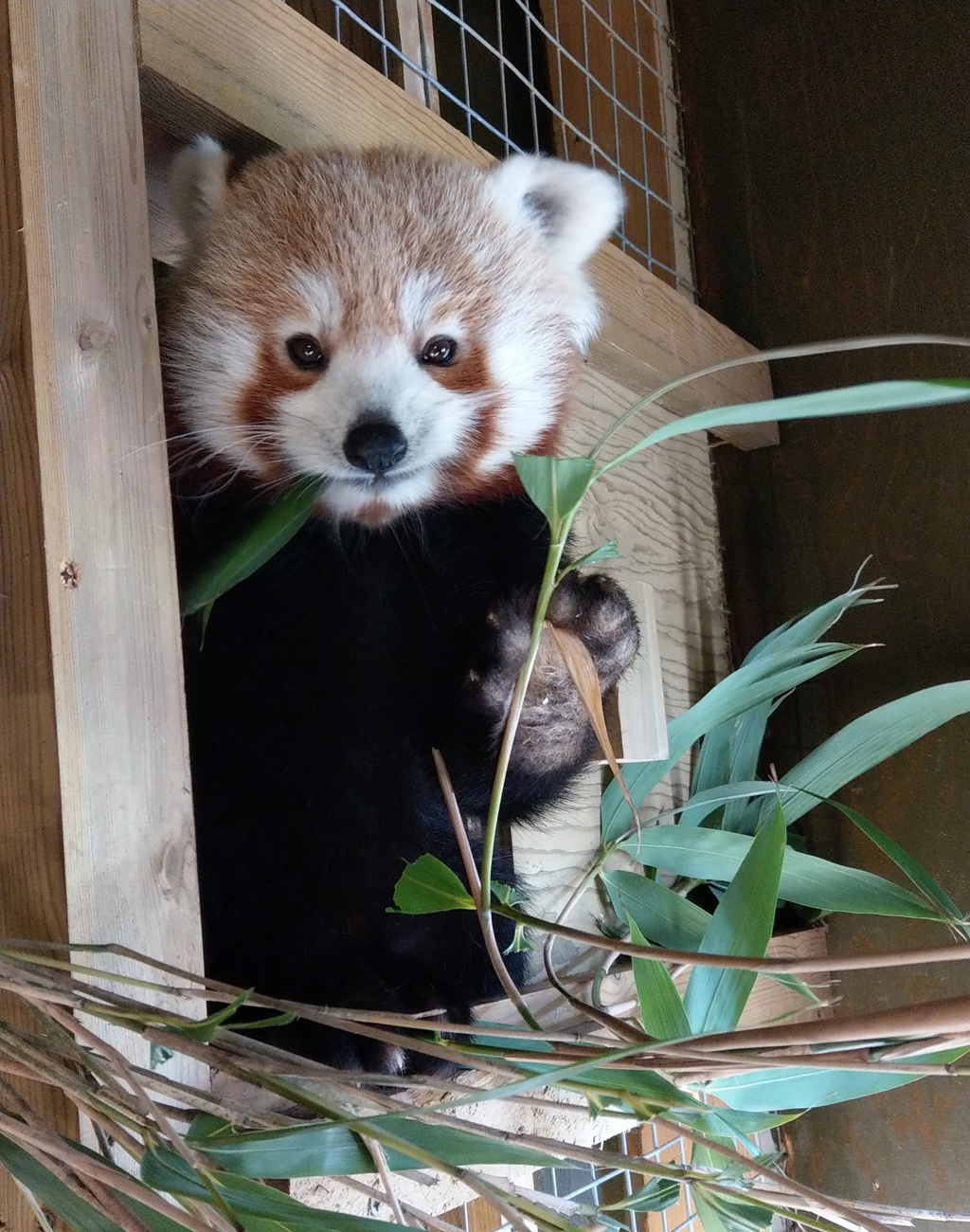
All about us
| Distribution: | From Nepal all the way through into central China, living in the high mountain ranges of the Himalayas. |
|---|---|
| Habitat: | Temperate forests in the foot hills of mountains |
| Height: | Up to 29cm shoulder height and 95cm in length including tail |
| Weight: | 4.5 – 5.5KG |
| Gestation Period: | 135 days |
Scientific name: Ailurus fulgens
The red panda spends most of its life in the trees; they have a modified wrist bone that acts like a thumb to help them grasp bamboo – Giant pandas have these too! When descending a tree head-first, the red panda rotates its ankle to control its descent, one of the few climbing species to do so.

red panda facts
Primarily bamboo but if they need to they will also eat berries, blossoms and fruit. They will even eat insects and bird eggs!
Red panda are a bit bigger than an average domestic cat and are often referred to as bamboo or fire cats! They have thick fur to deal with the harsh weathers they may face in the wild and all red panda have very distinctive stripy long tails which act like a scarf to keep them warm.
Breeding season is in late autumn through winter. The gestation period is about four months. Baby red panda are born in an average litter size of one to four babies.
Red panda build a nest or use hollow tree trunks or small caves to give birth to their newborn. The mother red panda takes care of her cubs until they reach adulthood when the next mating season begins.
Red panda communicate using body language (such as head bobbing and tail arching) and a variety of noises, such as a threatening “huff-quack”, squeals, twitters and a warning whistle.
The IUCN has listed Red panda as ‘Endangered’ with less than 10,000 individuals in the wild, although this figure may be much smaller. Unfortunately, they suffer from habitat loss and illegal killing and as a result individuals live in very small ‘subpopulations’, meaning the future could result in poor gene pools out in the wild from inbreeding.
Luckily, red panda have a well-managed global programme and they have plans for the future in how to improve the population.
